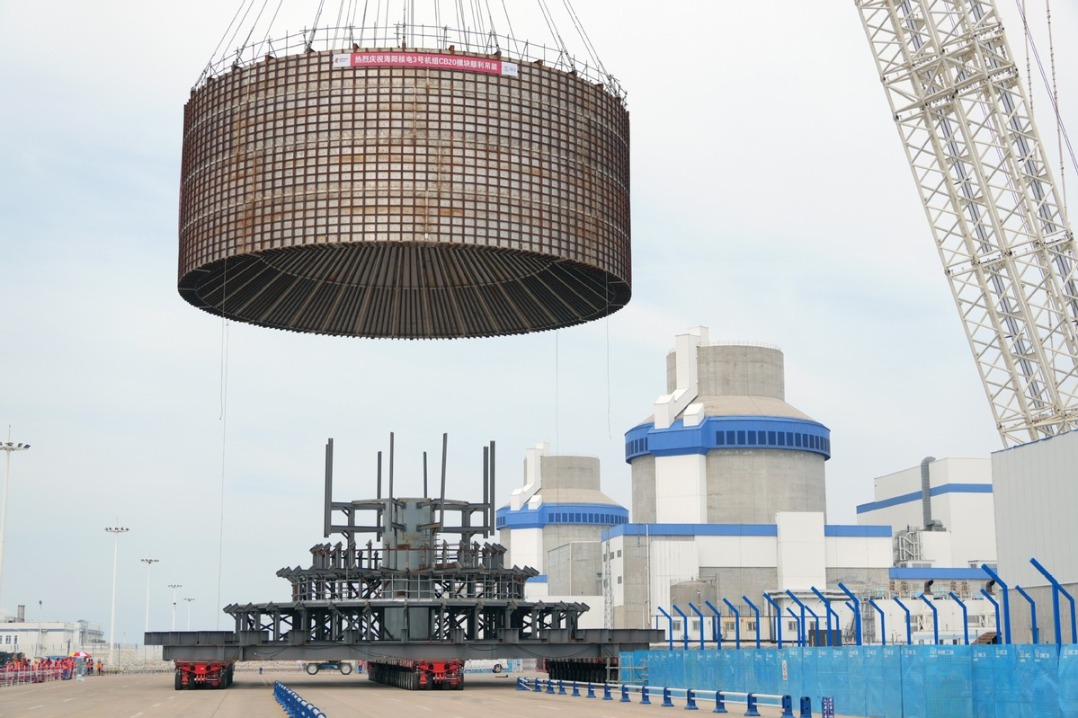Reform to boost realty sector's development


The "Resolution on Further Deepening Reform Comprehensively to Advance Chinese Modernization", issued by the third plenary session of the 20th Central Committee of the Communist Party of China on July 18, has charted the future direction of the real estate industry.
The third plenary session also issued a communique, which said the country will take measures to prevent and mitigate risks in the real estate sector and small and medium-sized financial institutions, and manage local government debt.
However, compared with some foreign cities, some Chinese cities could see further decline in housing prices, because the average rental yield in property hotspots such as New York, London and Tokyo is 2.5 percent, 2.5 percent and 2.1 percent, while that in Beijing, Shanghai, Guangzhou and Shenzhen is 1.5 percent, 1.8 percent, 1.3 percent and 1 percent.
Besides, real estate companies are more likely to default on payments because their financing capability is weak, and commercial housing sales remain sluggish. In fact, real estate risks could lead to banking risks and erode buyers' wealth.
For banks, the realty sector's defaults have led to bad debts, and the decline in the real estate sector has reduced bank credit and weakened profits, seriously affecting banks' ability to prevent or minimize risks. As for buyers, some of them have lost the down payment they made for housing when prices dropped in some regions. As a result, such people have been compelled to reduce consumption.
That's why the third plenum's resolution stressed the importance of regular, smooth housing supply, saying the country will expeditiously establish a housing system that promotes both rental housing and home-buying. The move to scale up the building and supply of government-subsidized housing to meet the housing needs of salaried people is a key feature of the real estate sector's new development model.
However, the construction of affordable housing faces problems such as the lack of financing, land allocation and a targeted supervision mechanism. Although the resolution does not mention the problems facing the "three major projects" — construction of affordable housing, public infrastructure for both normal and emergency use — they are encountering financing challenges which could affect the construction of affordable housing, with the fiscal pressure on local governments and financing restrictions on urban investment being major challenges.
To promote the construction of affordable housing and meet the housing needs of people of different income levels, a multi-level housing financial system should be established. China could consider picking a leaf out of the housing development book of Singapore, whose public housing is home to about 80 percent of the country's resident population. Yet China's current pilot policy needs to be improved, for which China has to first improve its strategic planning and coordination.
According to the plenum's resolution, city governments will be given greater decision-making powers including the power to devise their real estate policy and regulate the real estate market. Also, based on the local conditions, some cities will be permitted to lift or reduce restrictions on housing purchase and scrap certain criteria for ordinary and non-ordinary housing.
Moreover, the sharp decline in property sales can be attributed to the long-term demographic changes, but short-term factors such as interest rates on loans and property prices still prevent many residents from buying houses. To address the problem, first- and second-tier cities may be allowed to optimize their housing purchase restriction policy by, among other things, easing the eligibility criteria for home-buying and lowering the interest rates on loans.
Some restrictions on real estate supply could also be removed including the annulling of the "90-70" policy, which requires developers to have 70 percent of their newly built residential units to be below 90 square meters. This would help developers to design apartments in accordance with the market's demand. And restrictions on the supply and demand sides will be gradually removed, helping establish a new real estate development model.
The resolution also said that reforms will be carried out to change the way the real estate sector is financed, and improve the advance housing purchase system. Owing to the pre-sale system, real estate enterprises in China depend heavily on supply chain financing, housing pre-sale funds and other financing sources, making it difficult for them to prevent downturns, which result in the abandoning of many under-construction buildings.
And although the resolution said the taxation system for the real estate sector will be improved, the government may not introduce real estate tax legislation in the short term because the industry is still undergoing intensive reforms. The right time to introduce such a piece of legislation would be after China's macroeconomic recovery and the maturing of the real estate industry.
The resolution also said the integration of rural and urban areas creates new development space for the property sector and, hence, greater urban-rural integration in planning, development and governance should be promoted.
At present, China's urbanization rate is more than 60 percent. As such, a series of functional areas are likely to be built in cities, towns and rural areas to connect cities and rural areas. Different types of affordable housing, too, will be built in transit areas to meet the housing needs of the people who move from rural areas to cities.
The author is an associate researcher of the Peking University HSBC Business School Think Tank.
The views don't necessarily represent those of China Daily.
If you have a specific expertise, or would like to share your thought about our stories, then send us your writings at opinion@chinadaily.com.cn, and comment@chinadaily.com.cn.

































